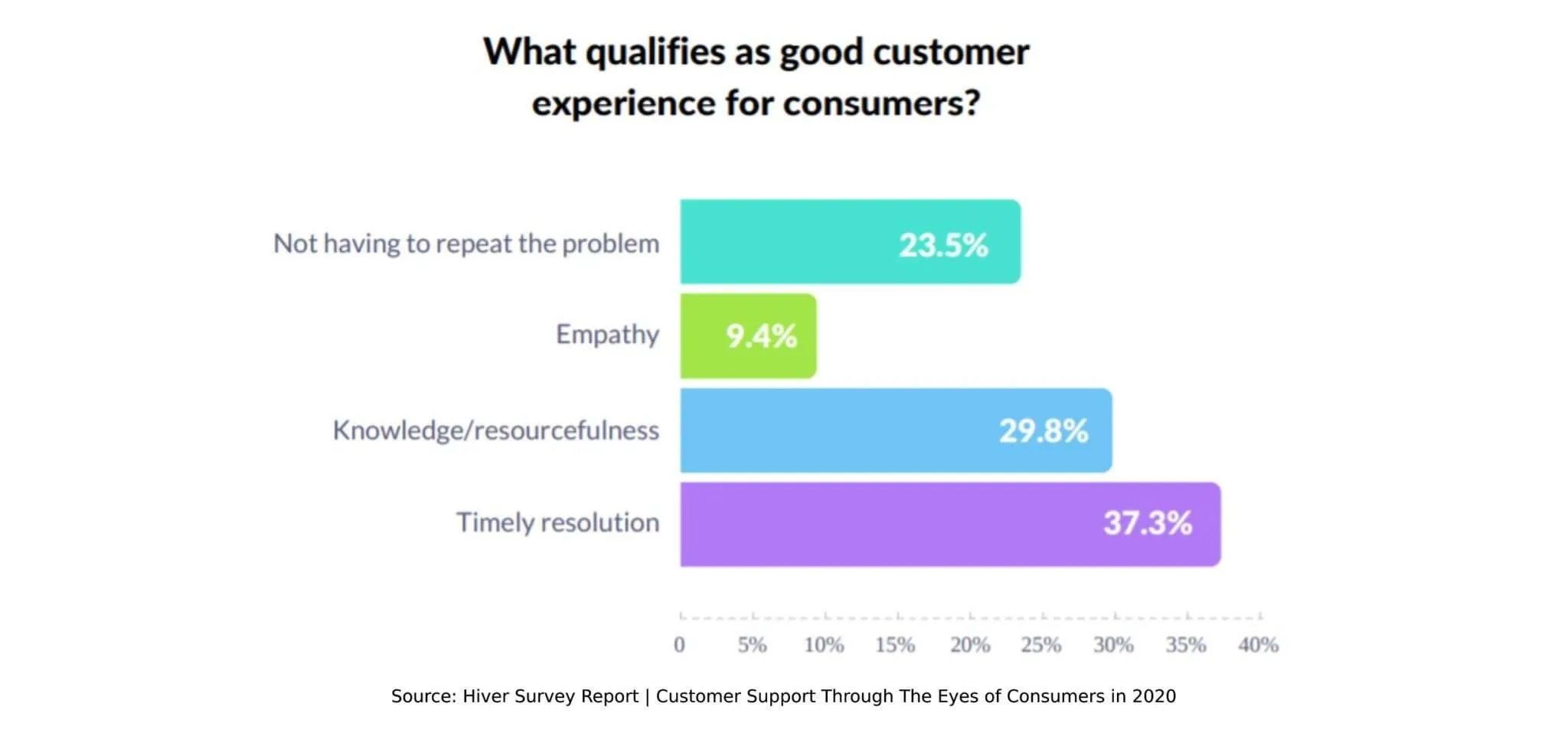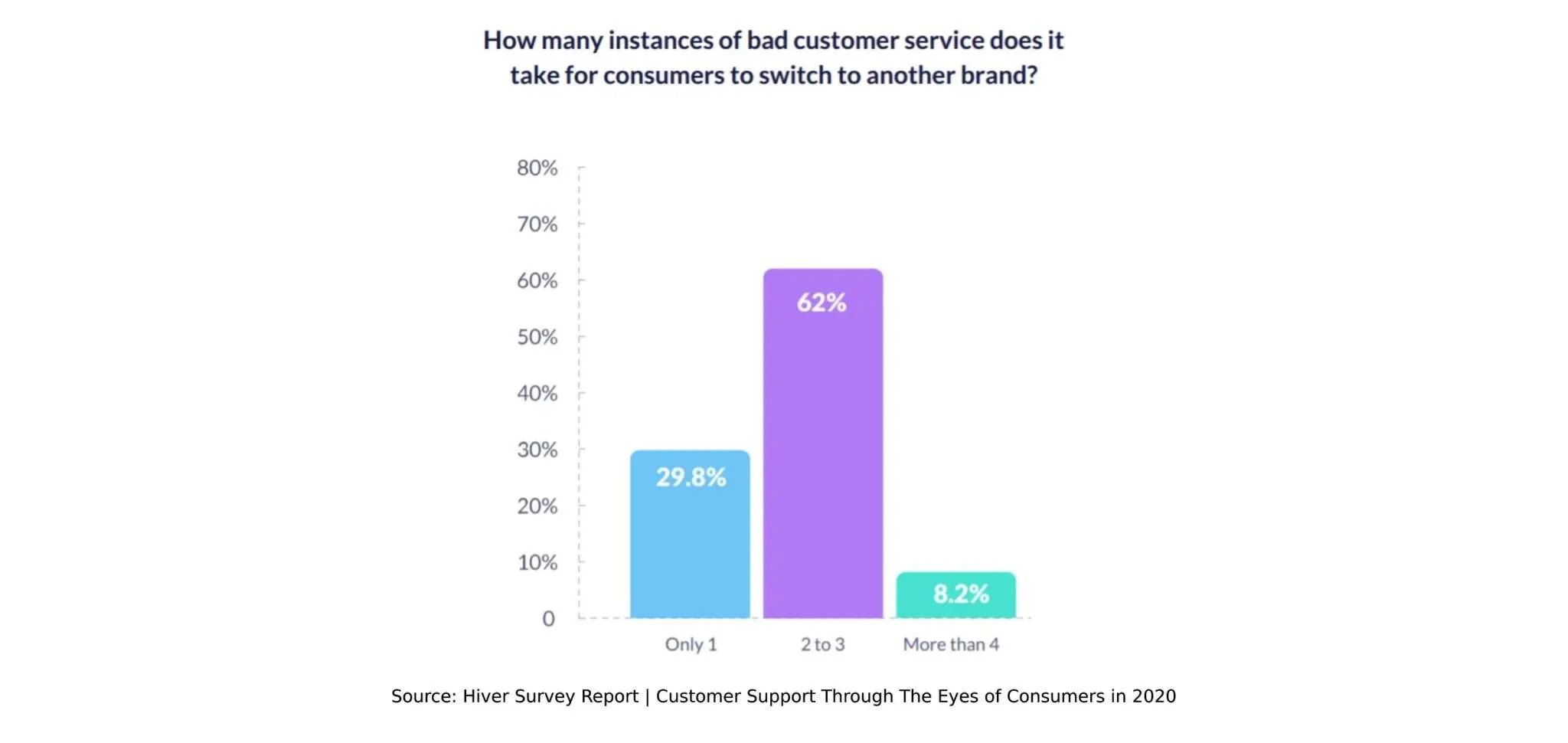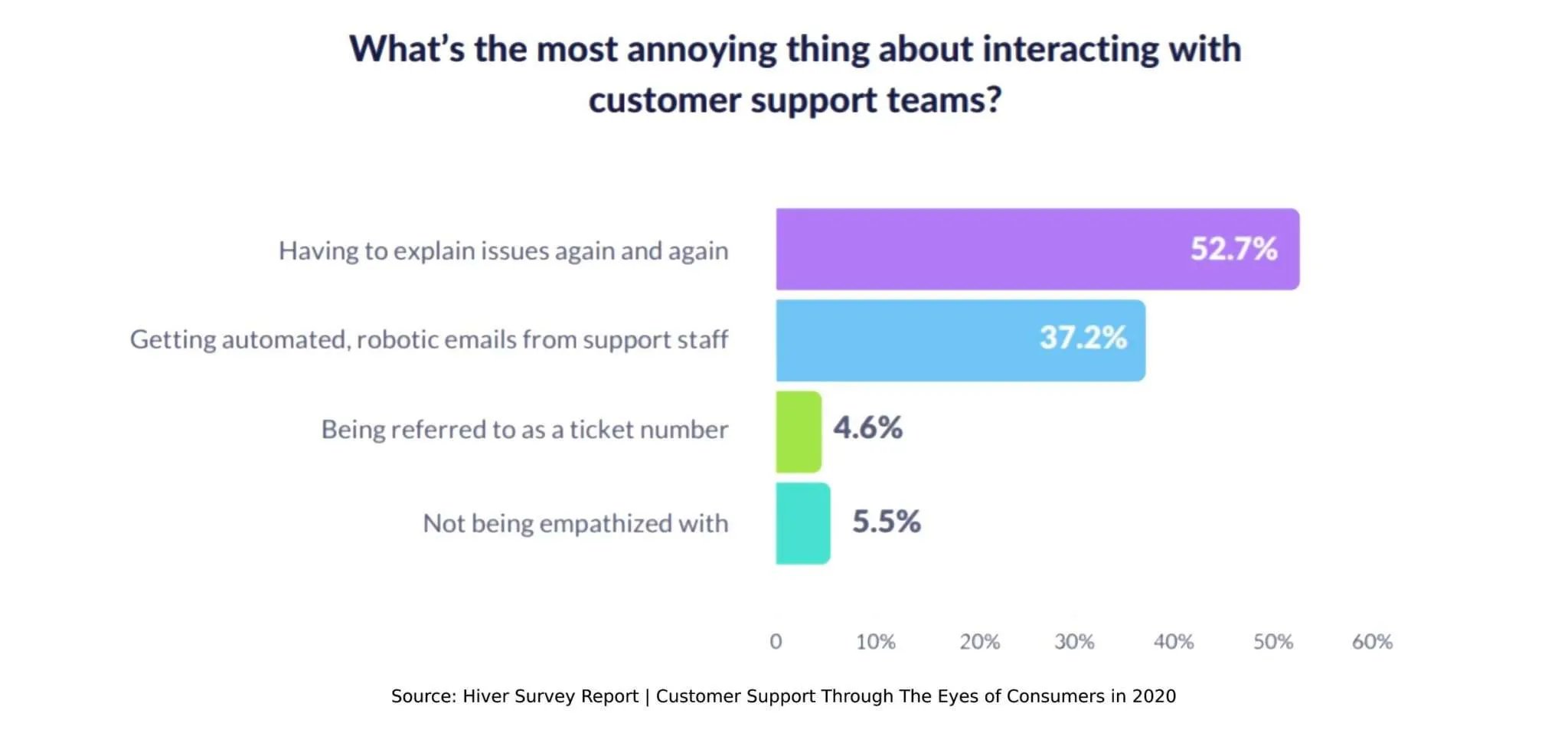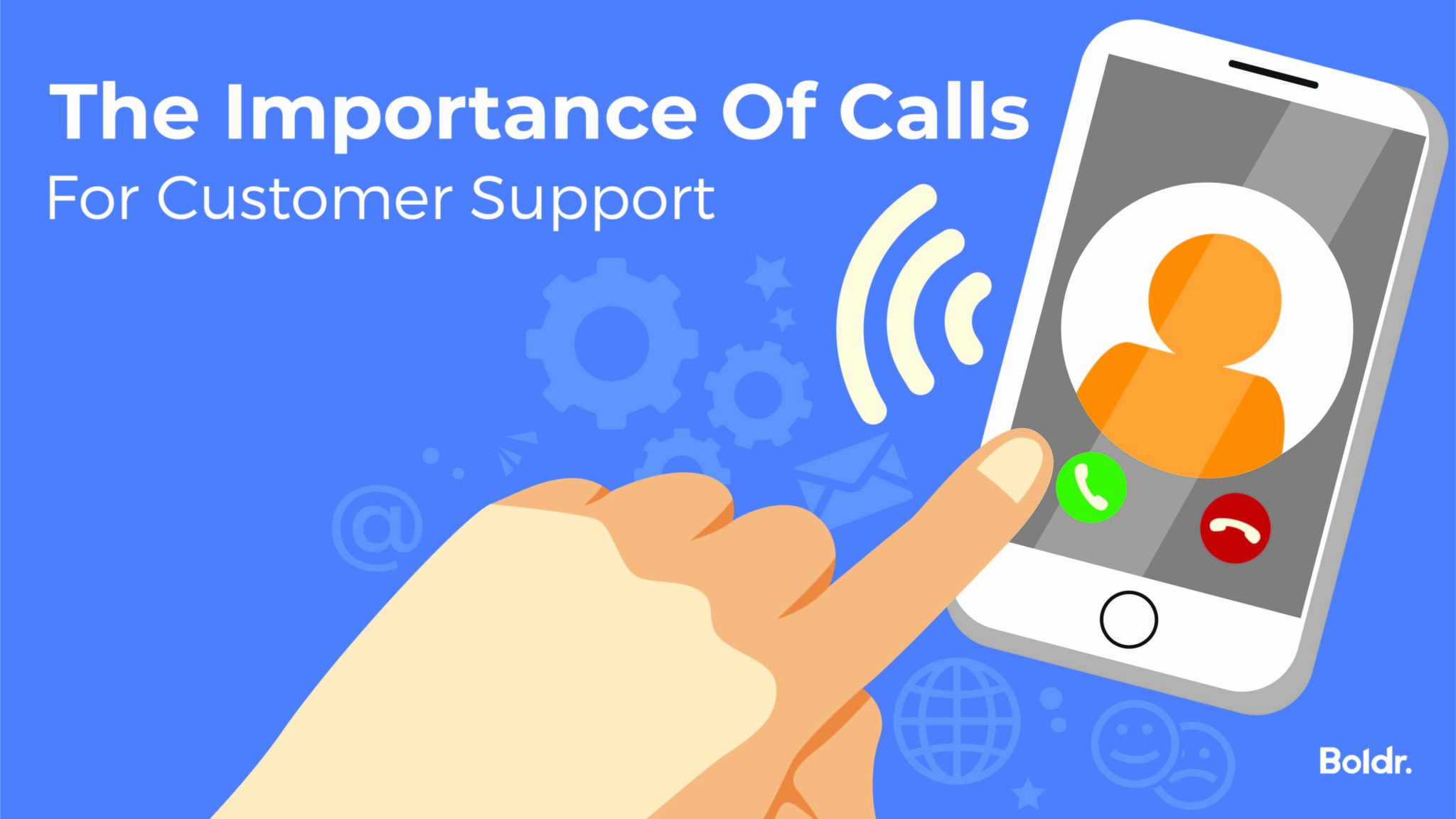Self-service customer support is all the rage. It’s been a blossoming topic for the better part of a decade, accelerated by technological and data solutions and an ever-increasing “want it, have it, now” culture.
The pandemic poured gasoline into an already overflowing gas tank and shot expectations and opportunities to the moon. For customers and for companies trying to keep up with their expectations.
People want self-service, many, more than any other kind of service. 40% of customers prefer self-service over any human contact.
If you’re not providing a rich self-service experience, you’re disappointing a large segment of your customer base. If you’re providing self-service, but doing so poorly (not carrying customer data forward, having customers repeat themselves, automating responses) you’re likely disappointing even more.
Here, we’ll share what we’ve learned—from excellent research being conducted in the field and from our first-hand experiences with some of the best customer service brands on the market—about how and why you should look to self-service as a critical tool in your full CX toolbelt.
What is Self-Service Support?
First, let’s define Self-Service Support.
Many companies use this definition from Gartner when leading with a definition of Self-Service Support: “Customer self-service and support is a blend of customer-initiated interaction technologies that are designed to enable customers to service themselves. It includes electronic records management systems, chat, and knowledge bases.”
Wow.
Let’s try simpler language.
Self-Service Support is when a company equips their customers with the tools, information, and access required to find answers to their questions directly.
Self-Service Support has tremendous potential when it’s designed to support the best outcome: helping customers find answers to their questions.
Where Self-Service falls short or sometimes falls apart, is when the motivation is about saving time, and saving money for the company. Like any support experience, when the focus shifts to managing the company’s operations as opposed to managing the customer’s experience, what you implement will come back to haunt you.
However, when you focus on improving the customer’s experience, in a channel like Self-Service, the impact to the costs and productivity of your business will likely be positive, materially.
Self-Service support is not entirely about saving time or “deflection.” Self-Service Support is about helping customers get direct answers to their questions, directly and efficiently. The end result of excellent Self Service Support, however, may be time saved and an organization that scales exponentially instead of linearly.

When you ask Customers what they look for in a good experience, they don’t say “chat” or “a great knowledge base.” They focus on the experience around the interaction.
Not having to repeat a problem.
Feeling empathized with.
Timely resolution.
Which is why the most important thing when thinking about Self-Service Support is to think most about what customers want and then how you can achieve it.
The Difference Between Self-Service Support in SaaS and Subscription Commerce vs Traditional Businesses
Not all Self-Service Support is created equal, nor should it be.
For our discussion, there’s one big difference between a traditional ecommerce company providing self-service, and a SaaS, or even a Subscription commerce company providing self-service: the relationship between company and customer.
Why? Well, we know that traditionally, ecommerce companies only get about 25-30% of their customers to return. However, for SaaS and Subscription commerce companies, every customer effectively comes back (until they churn, at which point they’re not a customer anymore). The subscription relationship and dynamics are different than transactional relationships.
Fundamental to that difference is expectation.
Because of the depth and the quality of the relationship and because of the tenure and frequency of engagement, SaaS and Subscription commerce companies have to be even more thoughtful when deploying self-service tools. Expectations when I make a one-time purchase, of someone knowing me, knowing my behavior, are low. However, if I’ve been a customer engaged with your company for months and months, I expect you to know and treat me that much better.
Also Read: Q&A with Ben McCormack: Building a Thriving Customer Support Team
Ecommerce companies are more likely to get away with buying a self-service customer support option.
SaaS companies and Subscription commerce businesses, can’t just buy, they have to invest.
In this post, we’re focused on SaaS and Subscription Commerce businesses.
Why Should SaaS Companies Invest in Self-Service Customer Support?
SaaS companies should invest in self-service customer support because customers want it and are asking for it. But also, because as customers gain familiarity with your product, they also start getting familiar with how to go about finding answers.
Which is why we turn to the ever popular statement that “Content is king.”
Generally speaking, technology has taught us to think of everything in bits and bytes, in modules and components. Building content modularly, thinking of your content in layers, is transformative.
In Marketing and Sales, creating content that can then be re-used for a blog post, outbound emails, sales scripts and presentations, digital ads—that’s where modular content is most widely used. A single client case study can find life across all aspects of the customer experience.
With respect to Customer Support, the same principles apply. The best place to start your Service Team is email. It’s manageable. It’s controllable. Customer expectations around response time are reasonable (more than the “instant” nature of chat).
What people don’t often realize though is that the email responses you provide to customers, with foresight, can be saved as “Canned Responses” or “Templates” and even, used to create the basis for Knowledge Base Articles.
As soon as you take that step and make that coordinated leap, you see the power of Self-Service as a way to help customers get their answers more quickly while also understanding that the hurdle between the email you sent and the article you create is much lower than you imagined.
Why should companies invest in Self-Service? Because investing in Self-Service is the rising tide that lifts all boats (and customer experiences). It serves as the foundation for customers finding their own answers. It provides a baseline of information against which your support teams can turn to for answers they’re providing directly. And it elevates your team to start taking on more complex workstreams.
It’s also essential. Because given the state of customer experiences, 40% of customers prefer self-service over human contact.
If you work in the industry though, you have to wonder where that preference comes from. Some of this preference is undeniably because customers are so disappointed by the full-service options and experiences they’ve had.
Key Considerations When Designing Self-Service Support
The first and most important key consideration: staff it. Invest in it. Don’t treat self-service like a transaction or a purchase; think of it as a product and an investment.
When I was at Help Scout, chat was emerging. Companies like Drift and Intercom were eating our lunch because they had added a chat function. The internal battles around chat both as a support tool for our customers and as a feature in our product were intense.
The breakthrough moment, when resistant team members bought in, was when we confirmed that by adding chat as a support option, you would increase support volume. Instead of what some argued, seeing a shift from people who sent email shifting to sending chat, what would happen is that the people who sent email would keep sending email; but the people who preferred chat, would now have a channel through which to engage.
For all the emphasis Customer Support teams place on doing right by the customer, too often, Customer Support teams still fall back on forcing customers into specific channels and workflows that the Support Team is set up to optimally manage.
“Turn off chat!”
“Take the phone number off the website!”
These are things Customer Support Teams have to say, at peak times, at times of transition. And the impact ends up being a loss of engagement with customers whose preferred channel of engagement has been removed.
If you’re going to launch a new channel, staff it. Invest in it. Create space for it. Otherwise, don’t do it. Good customer support is about managing expectations and meeting them, not about raising them and disappointing. Where product experience feedback tends to be nuanced, Customer Support experiences tend to the binary. People more clearly see them as “good” or “bad” with some outliers living at the extremes of both of those endpoints.
Related Read: Q&A with Annette Franz: Becoming a Customer-Centric Business
Support-as-a-Solution: Outsourcing Customer Support Automation for SaaS companies
Let’s recap:
- Self-Service is about helping customers directly to their answers, more productively, efficiently, helpfully.
- Self-Service works when it is focused on the Customer Experience not on Operational Goals.
- Self-Service requires a thoughtful approach and if done well, can be built atop existing workflows (email support) while providing a new foundation for broader support expansion (modular content supporting new channels).
- 40% of customers now prefer Self-Service Support to interactions with a person.
Here’s the thing: you know all this. I bet you read this post nodding your head and periodically recoiling with a “no $h!+” expression on your face.
The challenge with doing Self-Service right is rarely that people don’t know what to do; it’s more often, that they feel required to do it, stuck with resources to support it, and as a result, fall into a failing cycle on the ROI of Self Service while maintaining Customer Expectations.
Very practically, one bad Self-Service experience where an answer goes unfulfilled, where a customer has to then escalate (to email, chat, phone) and repeat their challenge to your company again, means you’ve found a way to alienate 70-90%+ of the customers falling into that category.

That’s all it takes.
In Customer Support, more than even in your product, getting the experience right is essential. Because by the time a customer has come to you for support in any way (self-service or otherwise), they’ve already burned through goodwill trying to solve the problem themselves in some way, intuitively or otherwise.
Self-Service done well requires planning, knowledge, foresight, and time.
You can do Self Service quickly, but you’ll fall victim to the things that customers complain about most when it comes to customer support:

How to Create Self-Service Support at SaaS and Subscription Commerce Companies
The key is to start. With content. Don’t overcomplicate what you’re doing; rather, find a way to use the work you’re already doing to educate, support, inform your customers, to create self-service support content. If you approach the work you’re doing educating, training, informing, serving your customers as a one-time conversation, you’ll treat it as a customized piece of content with a lifespan of 1 conversation.
However, if you approach each conversation with a modular approach; whereby you break the responses you have with customers into those elements which are unique to the customer (their business, their implementation, their purchase) vs those elements which are unique to a problem (what they are trying to achieve) and unique to your service or product (what they are expecting your product to do), all of a sudden, you have the makings of content that can be repurposed.
If you start with this approach in mind, as you take on each customer engagement and interaction, you will very soon find yourself with a library of content that can be used and reassembled to help not just customers get the most from your service or product, but playbooks and recipes for specific customers, with specific challenges or goals, achieve specific outcomes with your product and service.
All of a sudden, you have the basis for a search and query-based or a persona-based approach to support, which can be better brought to life self-service tools.
From there, the progressive spiral of self-service support begins. With each new set of modules created, your support team and your customers spend less time answering questions that were already answered before, and therefore more time exploring ways to get more value from their investment (customers) or reward their investment with more value (company).
WATCH: The Human Side of Customer Support
Self-Service is powerful not just because customers want it. Not just because it creates efficiency at certain support levels.
Self-Service that focuses on reducing costs ends up dying. It becomes a circle, not a flywheel or progressive spiral. At some point it hits a cap and a limit of value.
However, Self-Service that reduces costs, which are then reallocated and reinvested into higher value opportunities. Into giving more value to the customer.
Well, that’s when Self-Service powers your growth engine. As I first brought-to-life at Help Scout, Self Service becomes the engine of the most sustainable and powerful growth engine of the future: support-driven growth.
Explore outsourced SaaS customer support solutions with Boldr. Get in touch today!


